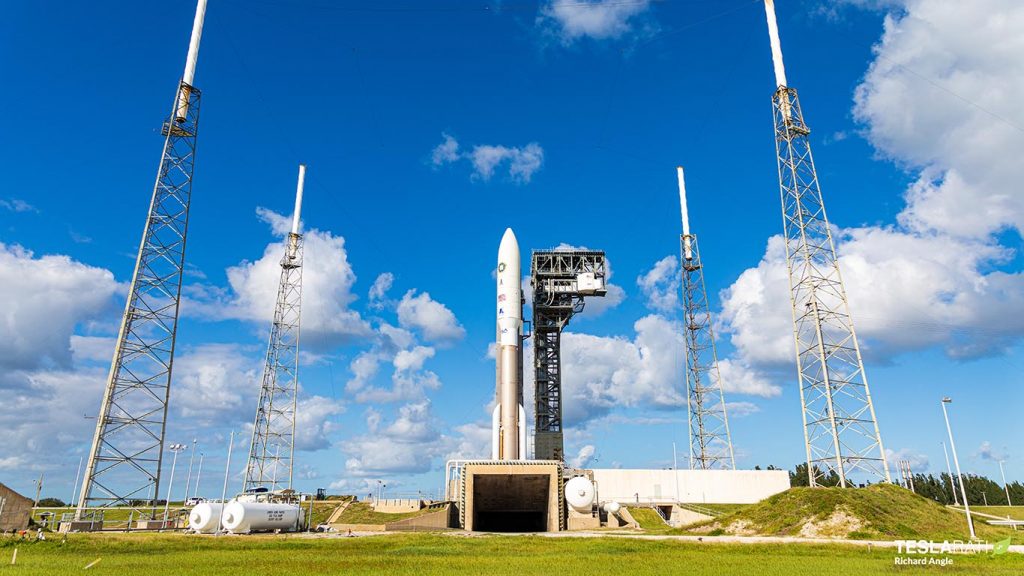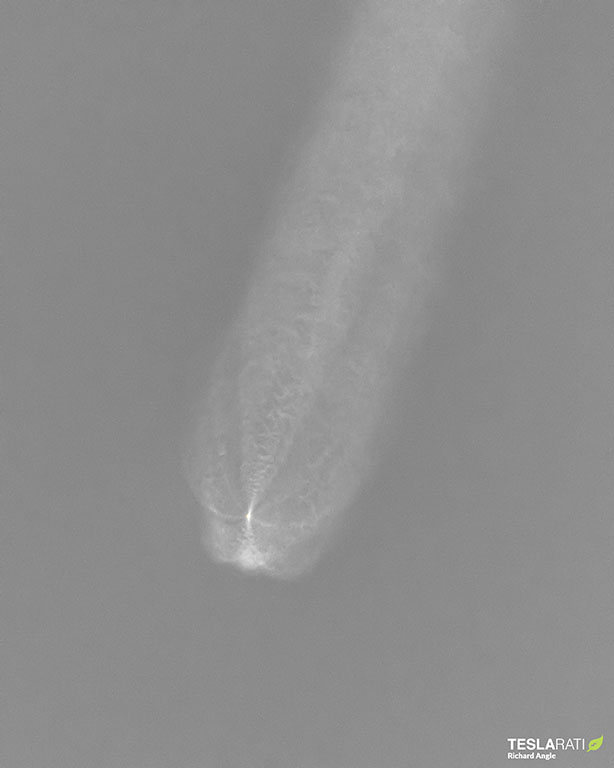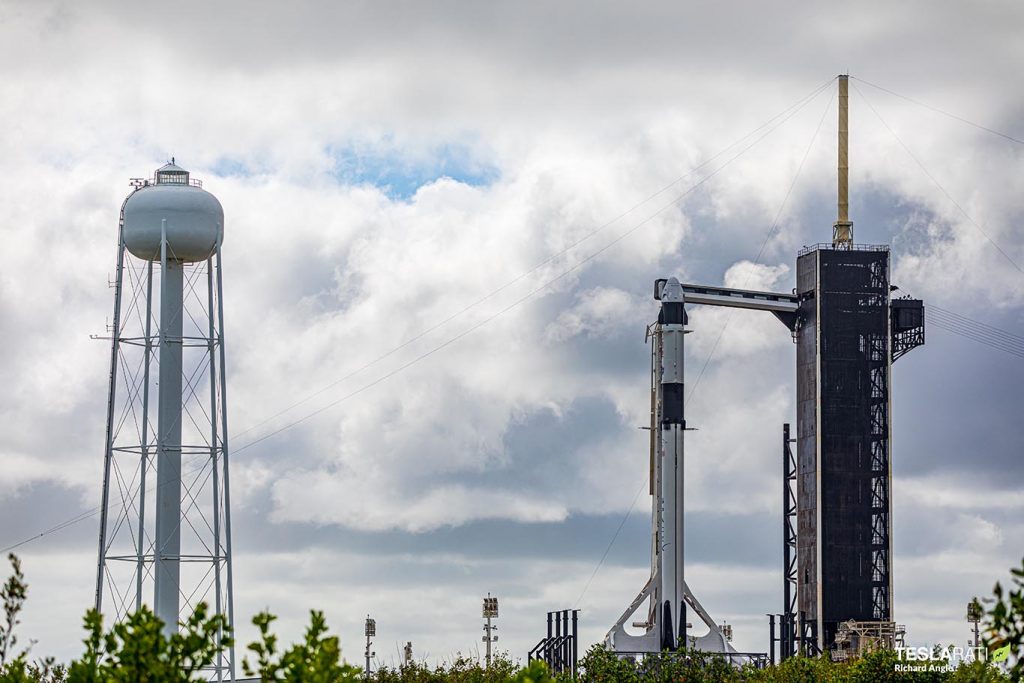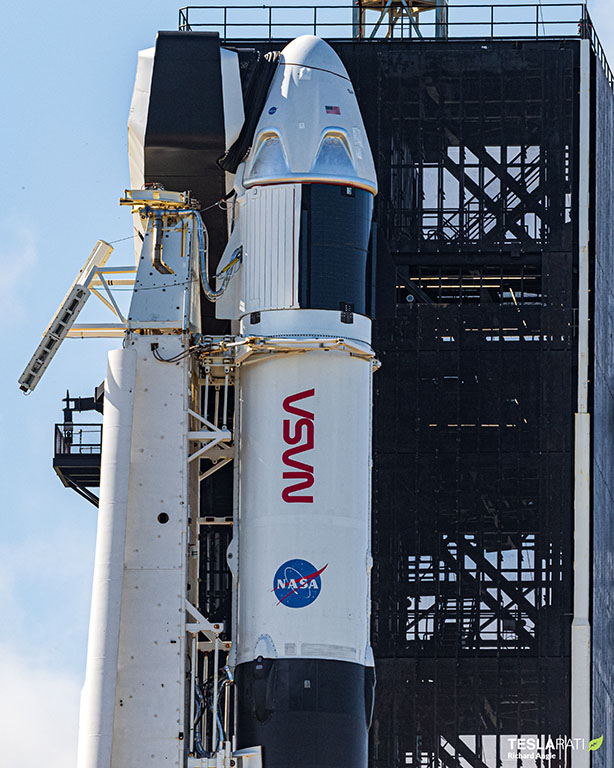

News
SpaceX Crew-1 launch set for Sunday, ULA successfully launches spy satellite
On Friday evening, Nov. 13, NASA and SpaceX announced that the first operational Commercial Crew Program mission of the Crew Dragon would be delayed 24 hours to Sunday, Nov. 15, at 7:27 pm EST (0027 GMT 11/16). During a Crew-1 pre-launch news conference, SpaceX’s senior director of the Human Spaceflight Programs, Benji Reed, stated that the delay was driven by impacts on recovery efforts caused by tropical storm Eta, which had plagued Florida for days.
Just prior to the news conference, United Launch Alliance(ULA) successfully launched its Atlas V rocket after suffering delays of its own earlier in the week. The NROL-101 mission carried a classified payload for the National Reconnaissance Office of the U.S. government and successfully launched from Space Launch Complex 41 (SLC-41) at Cape Canaveral Air Force Station at 5:32 pm EST.

Florida weather caused multiple launch delays
Weather, especially that caused by tropical storm Eta, has caused a domino effect of delays for SpaceX and ULA over the last few weeks. The ULA Atlas V 531 rocket stacked with the secretive NROL-101 payload, initially set to liftoff on Nov. 3, was first delayed by damage sustained to environmental control system hardware of the upper stage.
According to company CEO, Tory Bruno, as the rocket was transported from ULA’s vertical integration facility (VIF) to the launchpad of SLC-41, very high winds caused damage to a duct that controlled the flow rate of an upper payload environmental control system. As a result, the rocket was returned to the VIF to have the duct replaced. A launch attempt scheduled for the following day on Wednesday, Nov. 4, was called off due to an unrelated problem with ground support equipment.

The NROL-101 mission was then set to launch on Sunday, Nov. 8, but that attempt was eventually called off due to the impending weather that would be brought across the Florida peninsula by then hurricane Eta. On Friday, Nov. 6, the Atlas V 531 rocket and payload for the National Reconnaissance Office was once again returned to the VIF for protection from the storm.
A final launch attempt was identified for Friday, Nov. 13, just 22 hours before the scheduled launch of the SpaceX, NASA Crew-1 mission from nearby Launch Complex 39A at the Kennedy Space Center. Fortunately, the weather held out long enough for the ULA Atlas V 531 rocket to liftoff. Following liftoff and successful payload deployment the mission was later declared a full success by ULA.

Florida weather also caused offshore recovery delays, impacting crewed launch
Similarly, the SpaceX and NASA Crew-1 mission has also suffered setbacks due to inclement weather, although not at the launch site. Following the successful launch and landing of the B1062 Falcon 9 of the recent GPSII-SV04 mission on Thursday, Nov. 5, SpaceX recovery teams battled unsettled seas to return the booster and the recovery droneship, Of Course I Still Love You (OCISLY), safely back to Port Canaveral.

After securing B1062 safely aboard OCISLY, the SpaceX recovery vessel GO Quest took refuge at the Port of Morehead City in North Carolina. The recovery crew would wait there to assist with the recovery of the B1061 Falcon 9 of the Crew-1 mission, rather than return to Port Canaveral in Florida. The droneship Just Read The Instructions (JRTI) was intended to meet the crew of GO Quest at the Crew-1 booster recovery zone prior to the end of the week.
Due to high winds and rough seas churned up by tropical storm Eta, the OCISLY droneship took an exceptionally tedious 7-day journey hugging the eastern coast of the United States to return to Port Canaveral. The delay caused the crew transfer process from OCISLY to JRTI to be delayed which in turn hindered the departure of the JRTI droneship.
As tropical storm Eta moved out and away from Florida the waters of the Atlantic remained too rough for the JRTI droneship to make up for the lost time. Following the conclusion of SpaceX’s Crew-1 preflight launch readiness review on Friday, Nov. 13, it was announced that the delay in getting the recovery droneship to the B1061 landing zone would delay the Crew-1 launch attempt by 24 hours.
Recovering the Falcon 9 booster, of any mission, is a secondary mission objective. However, the recovery of the Crew-1, B1061 Falcon 9 is important to both NASA and SpaceX – enough so to delay a launch attempt. NASA and SpaceX have already designated this booster to be reused on the next Crew Dragon mission, Crew-2, targeted for no earlier than March 30, 2021. In order to reuse a booster to save on launch costs, it must first be successfully recovered.

If all goes to plan, three NASA astronauts and one astronaut from the Japan Aerospace Exploration Agency will climb aboard the Crew Dragon Resilience on Sunday, Nov. 15, and blast off to the International Space Station precisely at 7:27 pm EST (0027 11/16) from LC-39A at the Kennedy Space Center.
NASA and SpaceX will provide a hosted live broadcast of all Crew-1 events beginning at 3:15 pm EST on Sunday, Nov. 15, on NASA TV and on the SpaceX website.
Check out Teslarati’s newsletters for prompt updates, on-the-ground perspectives, and unique glimpses of SpaceX’s rocket launch and recovery processes.

News
Tesla FSD v14.2.2 is getting rave reviews from drivers
So far, early testers have reported buttery-smooth drives with confident performance, even at night or on twisty roads.

Tesla Full Self-Driving (Supervised) v14.2.2 is receiving positive reviews from owners, with several drivers praising the build’s lack of hesitation during lane changes and its smoother decision-making, among others.
The update, which started rolling out on Monday, also adds features like dynamic arrival pin adjustment. So far, early testers have reported buttery-smooth drives with confident performance, even at night or on twisty roads.
Owners highlight major improvements
Longtime Tesla owner and FSD user @BLKMDL3 shared a detailed 10-hour impression of FSD v14.2.2, noting that the system exhibited “zero lane change hesitation” and “extremely refined” lane choices. He praised Mad Max mode’s performance, stellar parking in locations including ticket dispensers, and impressive canyon runs even in dark conditions.
Fellow FSD user Dan Burkland reported an hour of FSD v14.2.2’s nighttime driving with “zero hesitations” and “buttery smooth” confidence reminiscent of Robotaxi rides in areas such as Austin, Texas. Veteran FSD user Whole Mars Catalog also demonstrated voice navigation via Grok, while Tesla owner Devin Olsen completed a nearly two-hour drive with FSD v14.2.2 in heavy traffic and rain with strong performance.
Closer to unsupervised
FSD has been receiving rave reviews, even from Tesla’s competitors. Xpeng CEO He Xiaopeng, for one, offered fresh praise for FSD v14.2 after visiting Silicon Valley. Following extended test drives of Tesla vehicles running the latest FSD software, He stated that the system has made major strides, reinforcing his view that Tesla’s approach to autonomy is indeed the proper path towards autonomy.
According to He, Tesla’s FSD has evolved from a smooth Level 2 advanced driver assistance system into what he described as a “near-Level 4” experience in terms of capabilities. While acknowledging that areas of improvement are still present, the Xpeng CEO stated that FSD’s current iteration significantly surpasses last year’s capabilities. He also reiterated his belief that Tesla’s strategy of using the same autonomous software and hardware architecture across private vehicles and robotaxis is the right long-term approach, as it would allow users to bypass intermediate autonomy stages and move closer to Level 4 functionality.
News
Elon Musk’s Grok AI to be used in U.S. War Department’s bespoke AI platform
The partnership aims to provide advanced capabilities to 3 million military and civilian personnel.

The U.S. Department of War announced Monday an agreement with Elon Musk’s xAI to embed the company’s frontier artificial intelligence systems, powered by the Grok family of models, into the department’s bespoke AI platform GenAI.mil.
The partnership aims to provide advanced capabilities to 3 million military and civilian personnel, with initial deployment targeted for early 2026 at Impact Level 5 (IL5) for secure handling of Controlled Unclassified Information.
xAI Integration
As noted by the War Department’s press release, GenAI.mil, its bespoke AI platform, will gain xAI for the Government’s suite of tools, which enable real-time global insights from the X platform for “decisive information advantage.” The rollout builds on xAI’s July launch of products for U.S. government customers, including federal, state, local, and national security use cases.
“Targeted for initial deployment in early 2026, this integration will allow all military and civilian personnel to use xAI’s capabilities at Impact Level 5 (IL5), enabling the secure handling of Controlled Unclassified Information (CUI) in daily workflows. Users will also gain access to real‑time global insights from the X platform, providing War Department personnel with a decisive information advantage,” the Department of War wrote in a press release.
Strategic advantages
The deal marks another step in the Department of War’s efforts to use cutting-edge AI in its operations. xAI, for its part, highlighted that its tools can support administrative tasks at the federal, state and local levels, as well as “critical mission use cases” at the front line of military operations.
“The War Department will continue scaling an AI ecosystem built for speed, security, and decision superiority. Newly IL5-certified capabilities will empower every aspect of the Department’s workforce, turning AI into a daily operational asset. This announcement marks another milestone in America’s AI revolution, and the War Department is driving that momentum forward,” the War Department noted.
News
Tesla FSD (Supervised) v14.2.2 starts rolling out
The update focuses on smoother real-world performance, better obstacle awareness, and precise end-of-trip routing, among other improvements.

Tesla has started rolling out Full Self-Driving (Supervised) v14.2.2, bringing further refinements to its most advanced driver-assist system. The new FSD update focuses on smoother real-world performance, better obstacle awareness, and precise end-of-trip routing, among other improvements.
Key FSD v14.2.2 improvements
As noted by Not a Tesla App, FSD v14.2.2 upgrades the vision encoder neural network with higher resolution features, enhancing detection of emergency vehicles, road obstacles, and human gestures. New Arrival Options let users select preferred drop-off styles, such as Parking Lot, Street, Driveway, Parking Garage, or Curbside, with the navigation pin automatically adjusting to the user’s ideal spot for precision.
Other additions include pulling over for emergency vehicles, real-time vision-based detours for blocked roads, improved gate and debris handling, and extreme Speed Profiles for customized driving styles. Reliability gains cover fault recovery, residue alerts on the windshield, and automatic narrow-field camera washing for new 2026 Model Y units.
FSD v14.2.2 also boosts unprotected turns, lane changes, cut-ins, and school bus scenarios, among other things. Tesla also noted that users’ FSD statistics will be saved under Controls > Autopilot, which should help drivers easily view how much they are using FSD in their daily drives.
Key FSD v14.2.2 release notes
Full Self-Driving (Supervised) v14.2.2 includes:
- Upgraded the neural network vision encoder, leveraging higher resolution features to further improve scenarios like handling emergency vehicles, obstacles on the road, and human gestures.
- Added Arrival Options for you to select where FSD should park: in a Parking Lot, on the Street, in a Driveway, in a Parking Garage, or at the Curbside.
- Added handling to pull over or yield for emergency vehicles (e.g. police cars, fire trucks, ambulances).
- Added navigation and routing into the vision-based neural network for real-time handling of blocked roads and detours.
- Added additional Speed Profile to further customize driving style preference.
- Improved handling for static and dynamic gates.
- Improved offsetting for road debris (e.g. tires, tree branches, boxes).
- Improve handling of several scenarios, including unprotected turns, lane changes, vehicle cut-ins, and school buses.
- Improved FSD’s ability to manage system faults and recover smoothly from degraded operation for enhanced reliability.
- Added alerting for residue build-up on interior windshield that may impact front camera visibility. If affected, visit Service for cleaning!
- Added automatic narrow field washing to provide rapid and efficient front camera self-cleaning, and optimize aerodynamics wash at higher vehicle speed.
- Camera visibility can lead to increased attention monitoring sensitivity.
Upcoming Improvements:
- Overall smoothness and sentience.
- Parking spot selection and parking quality.








